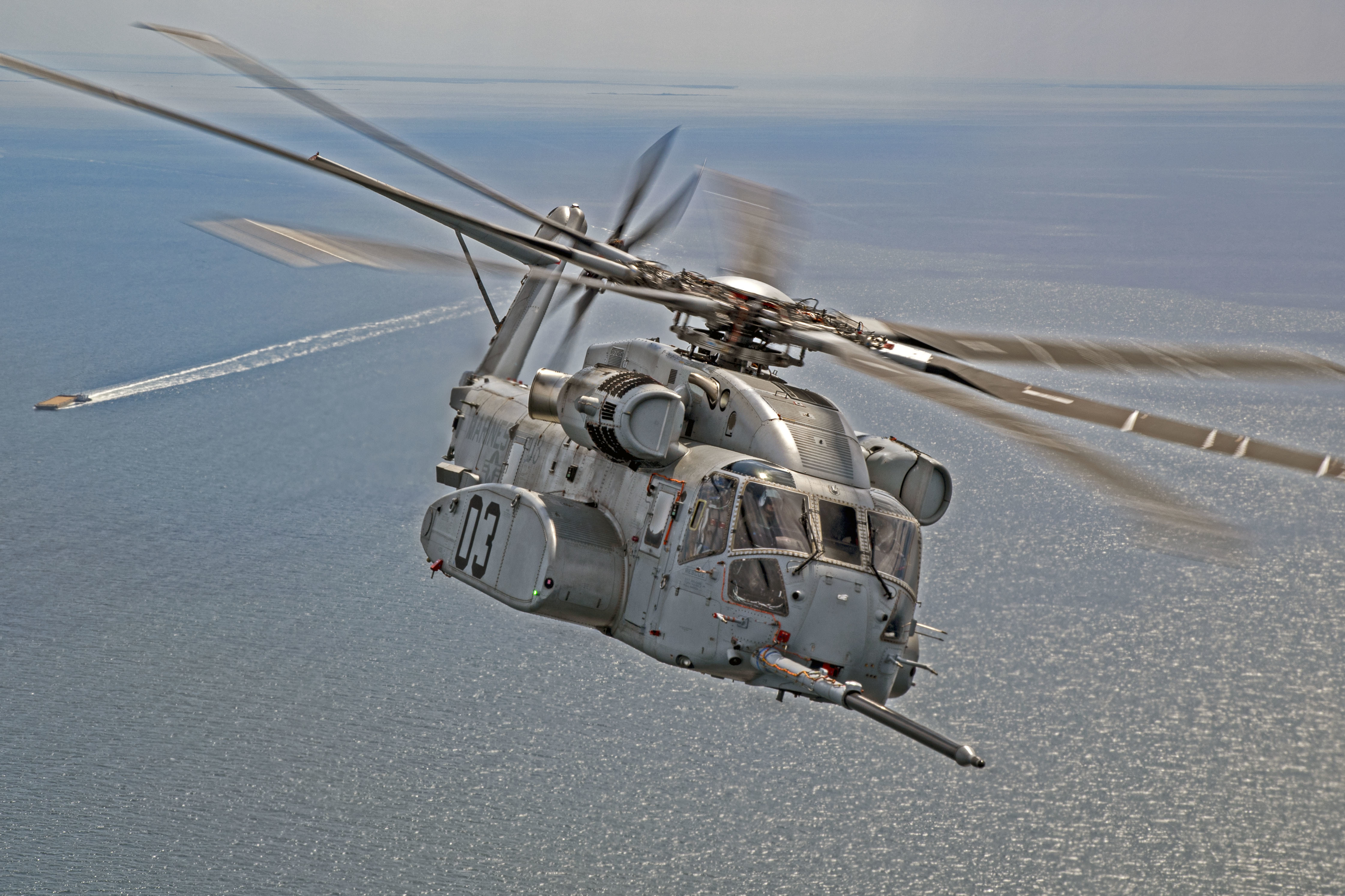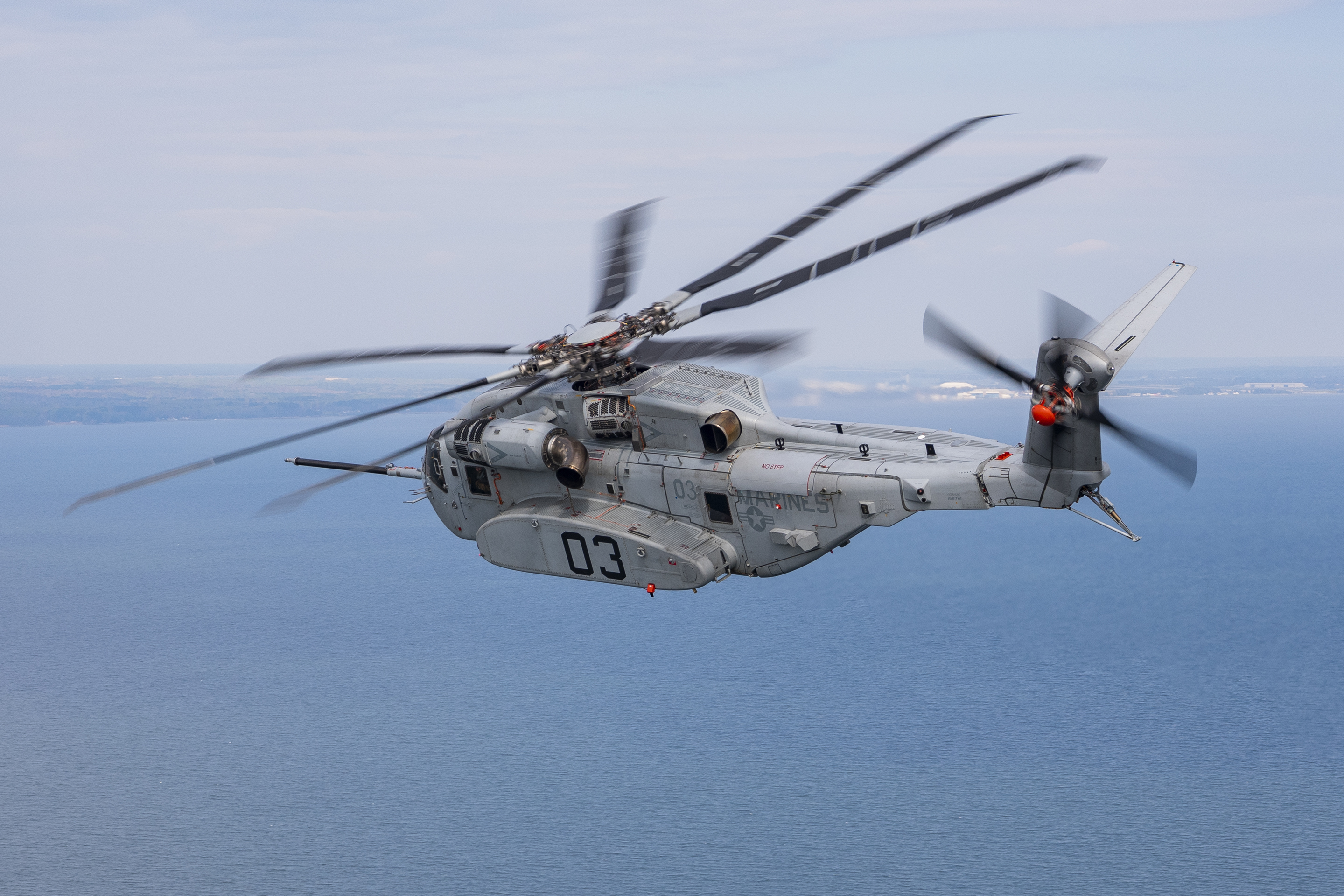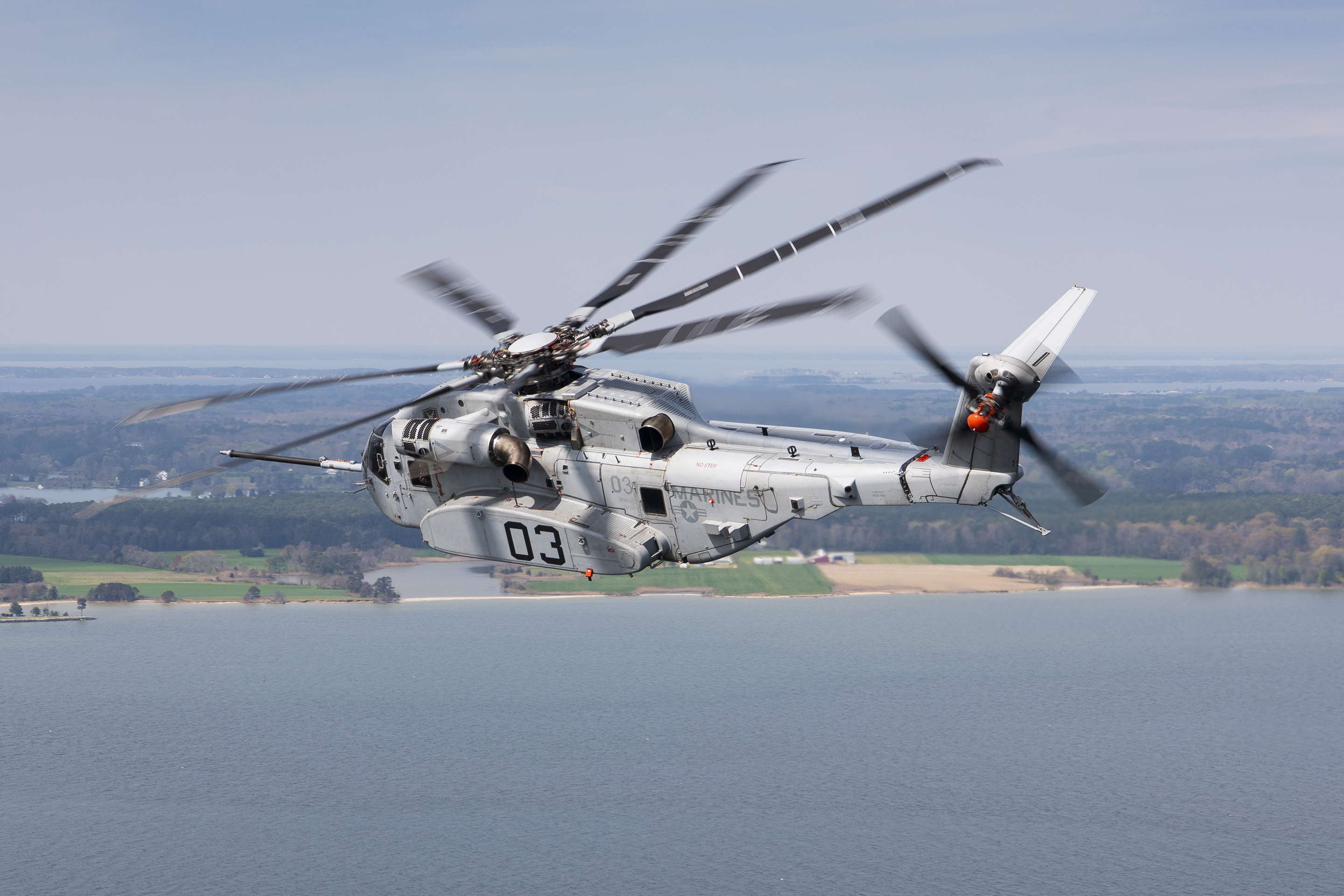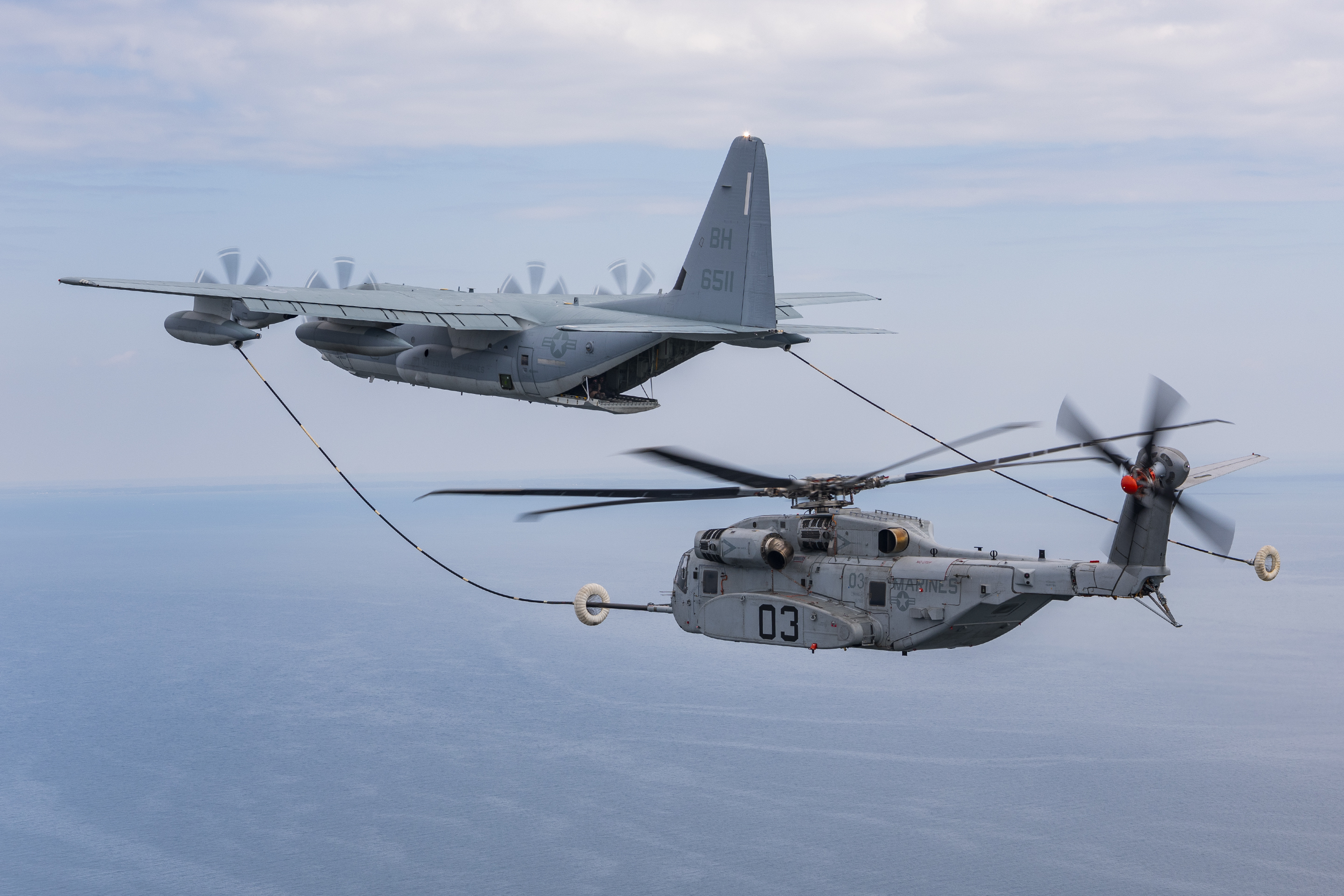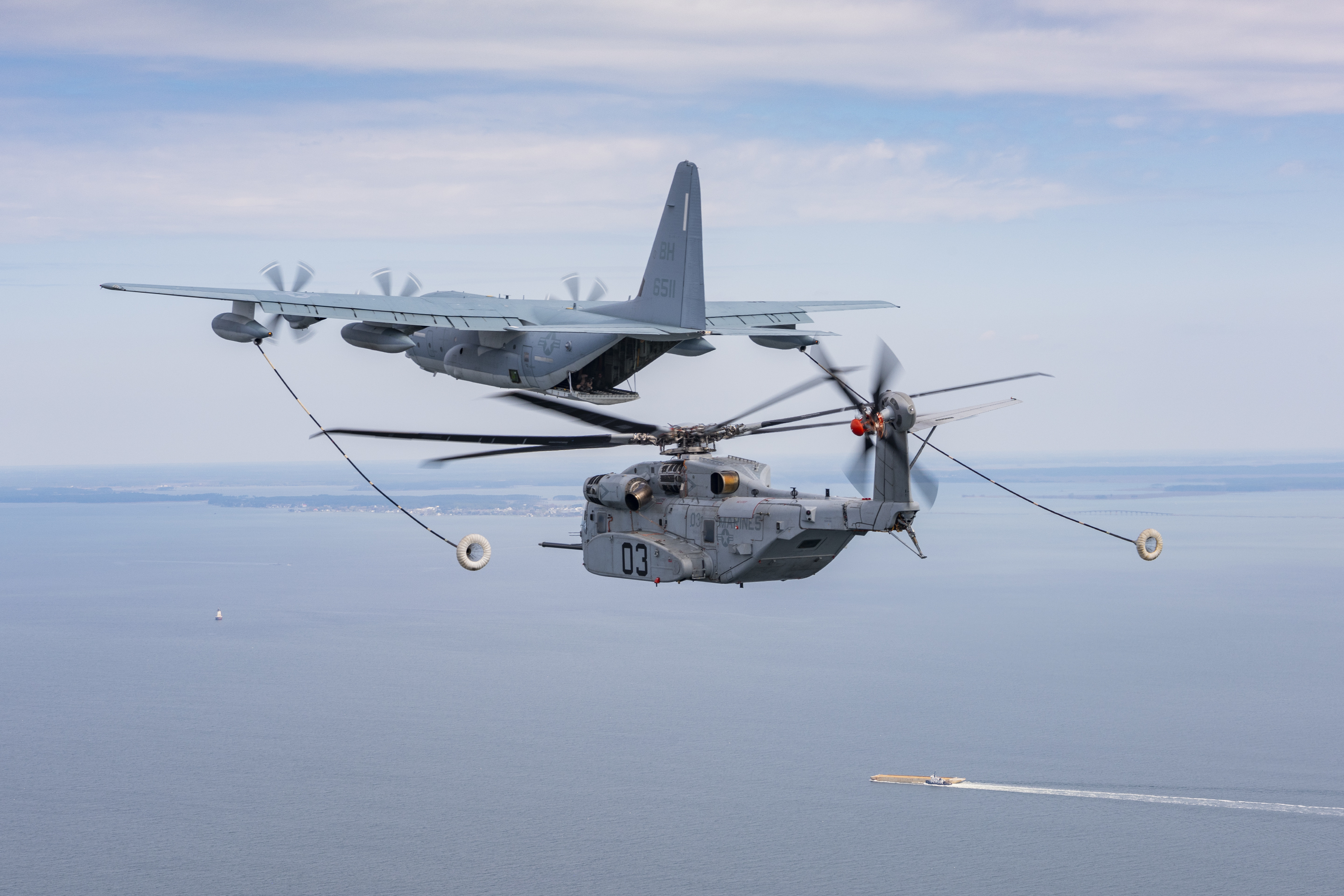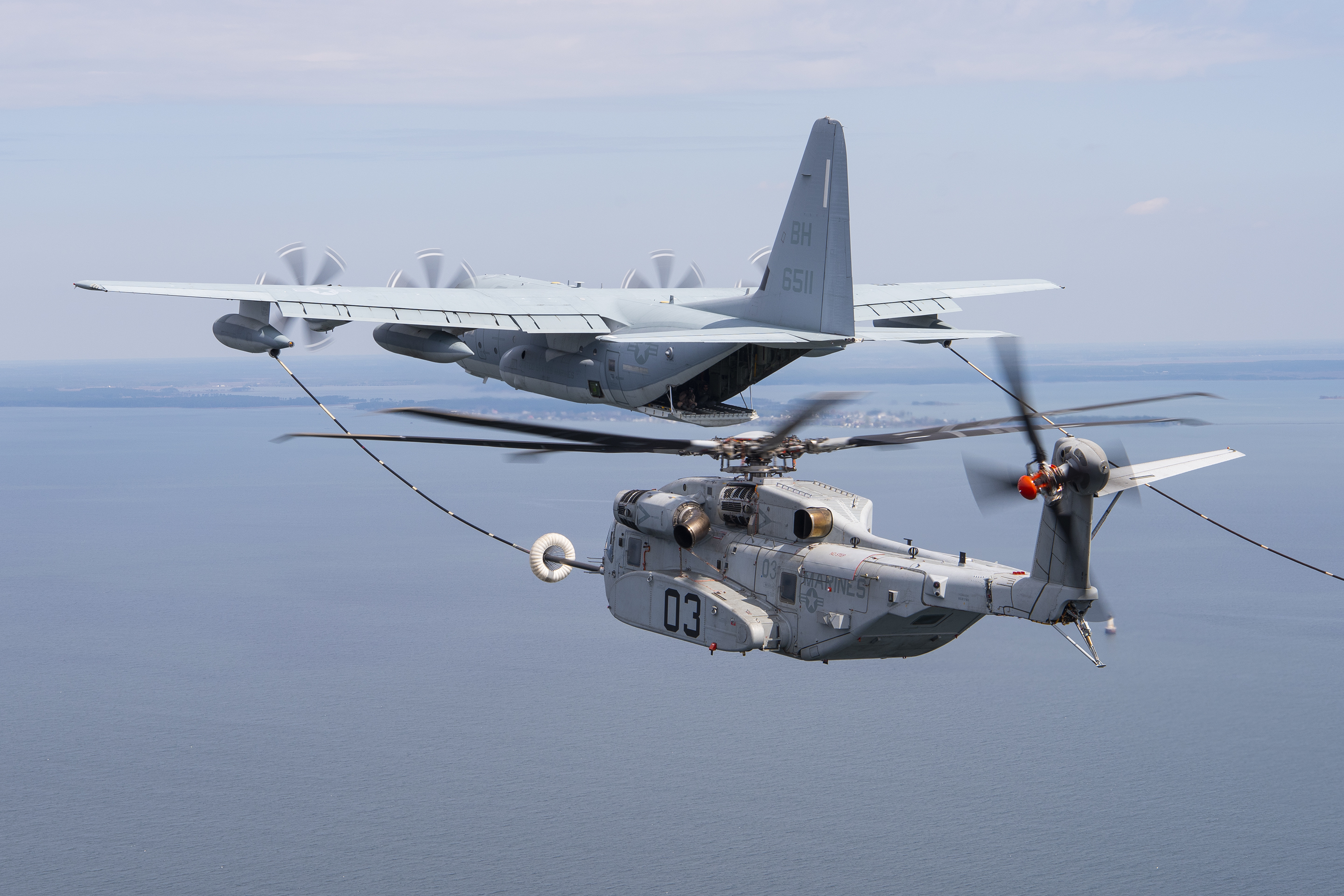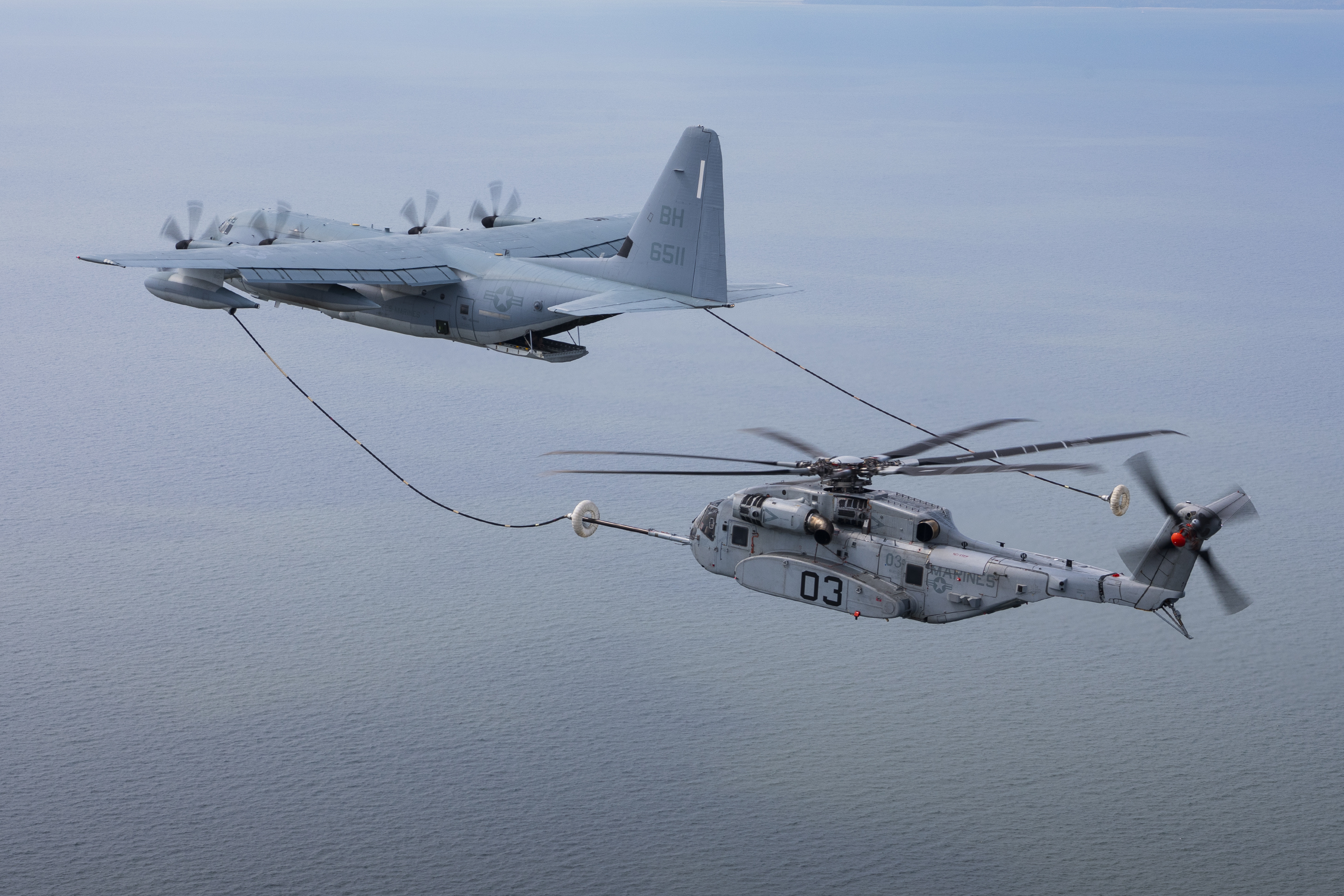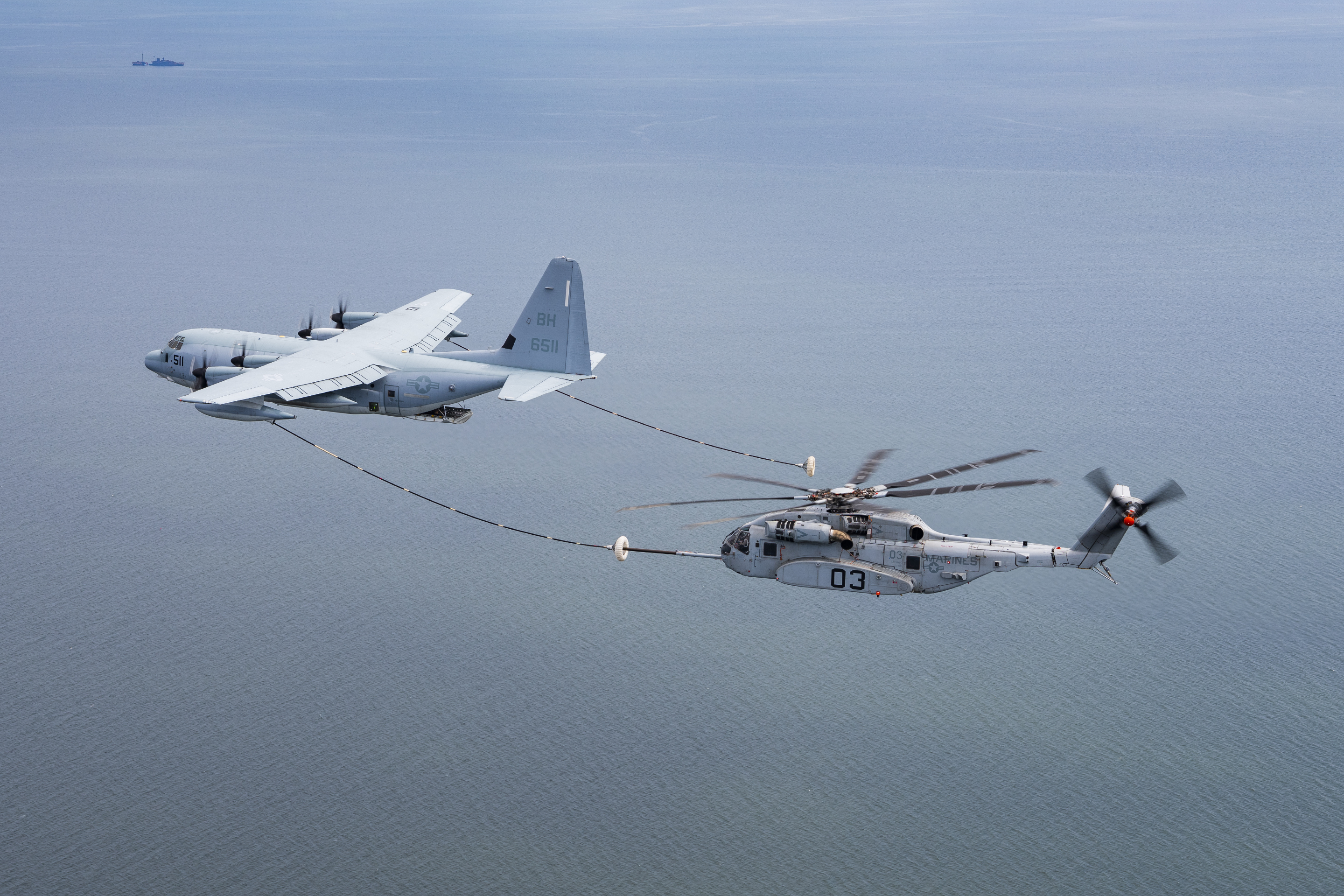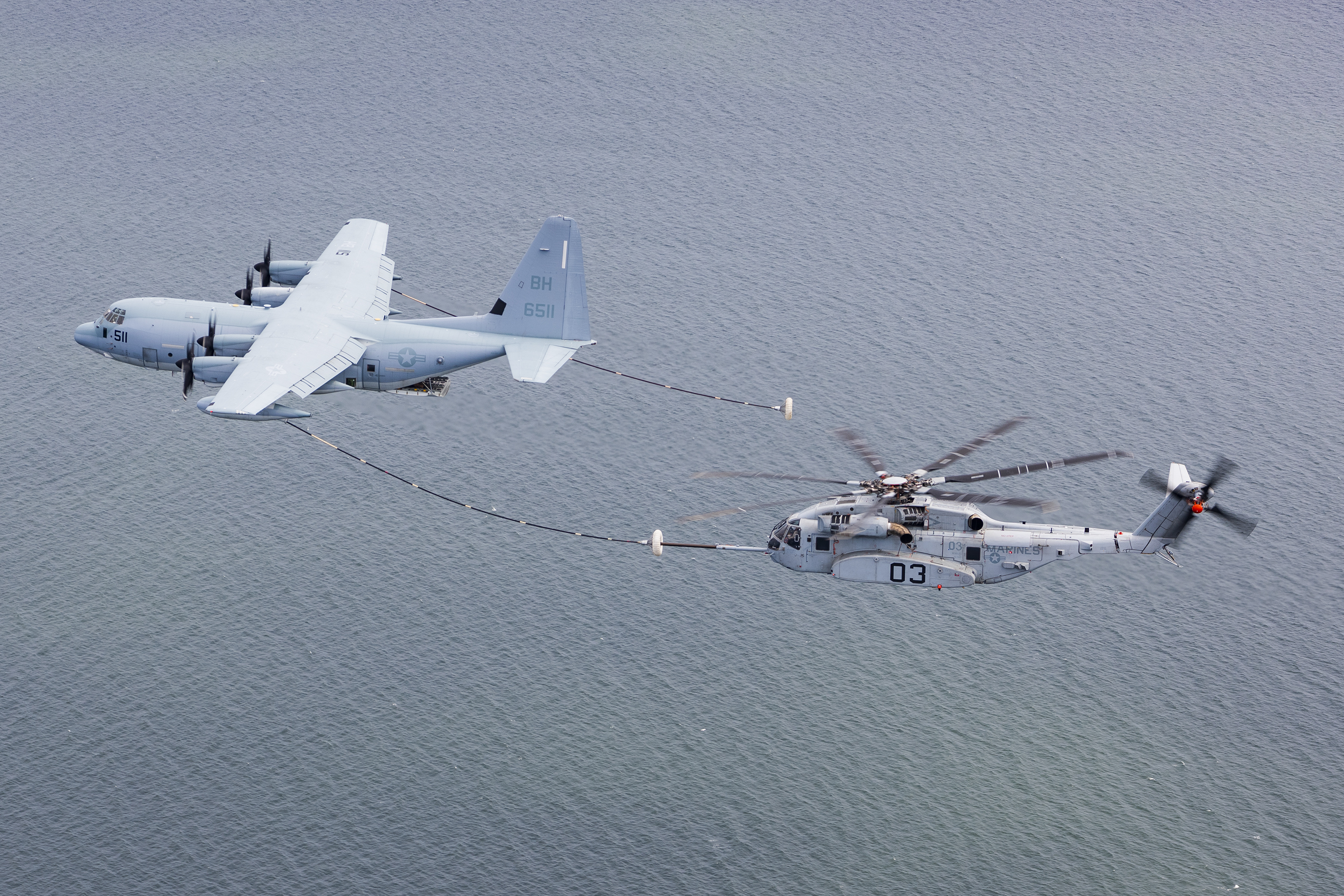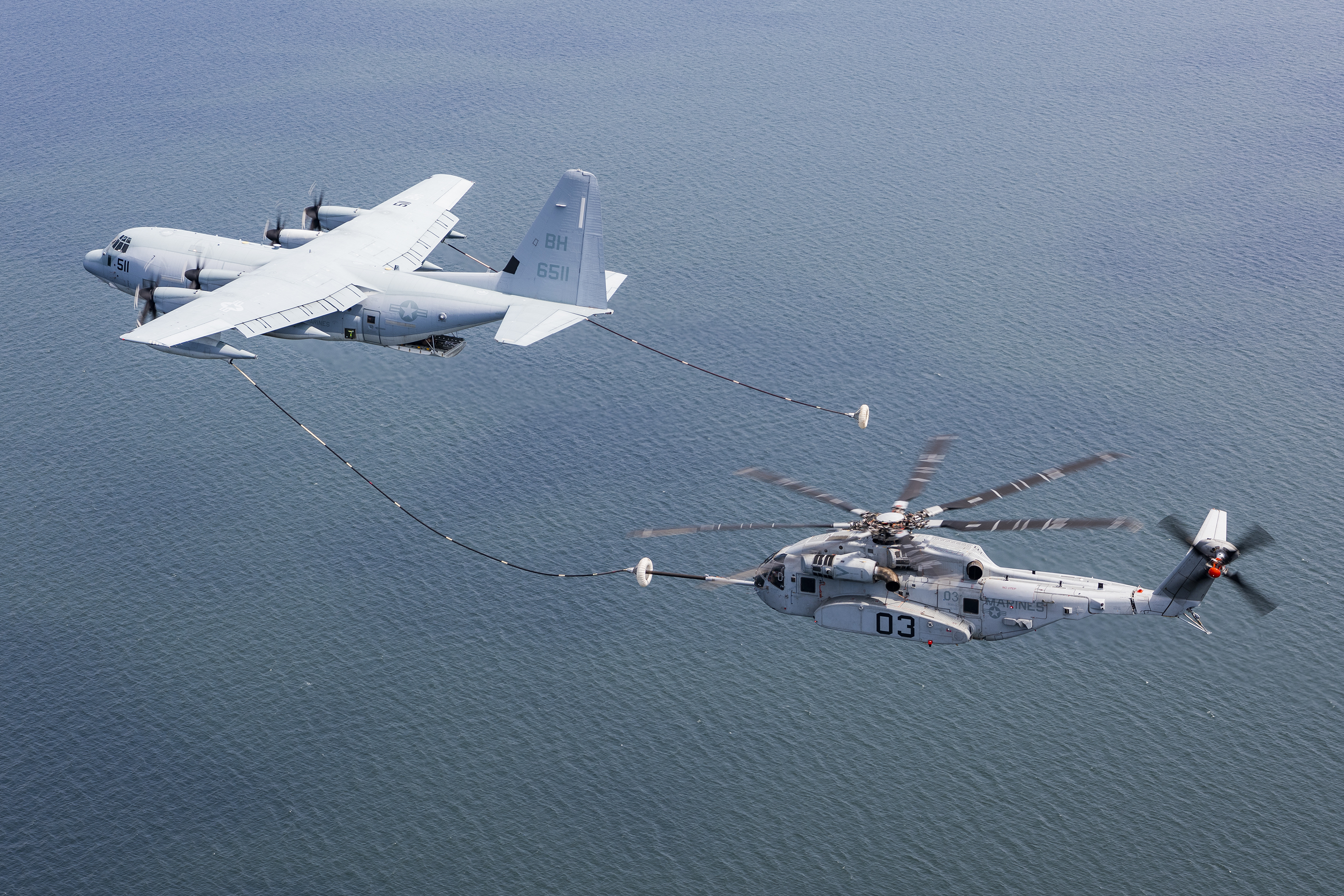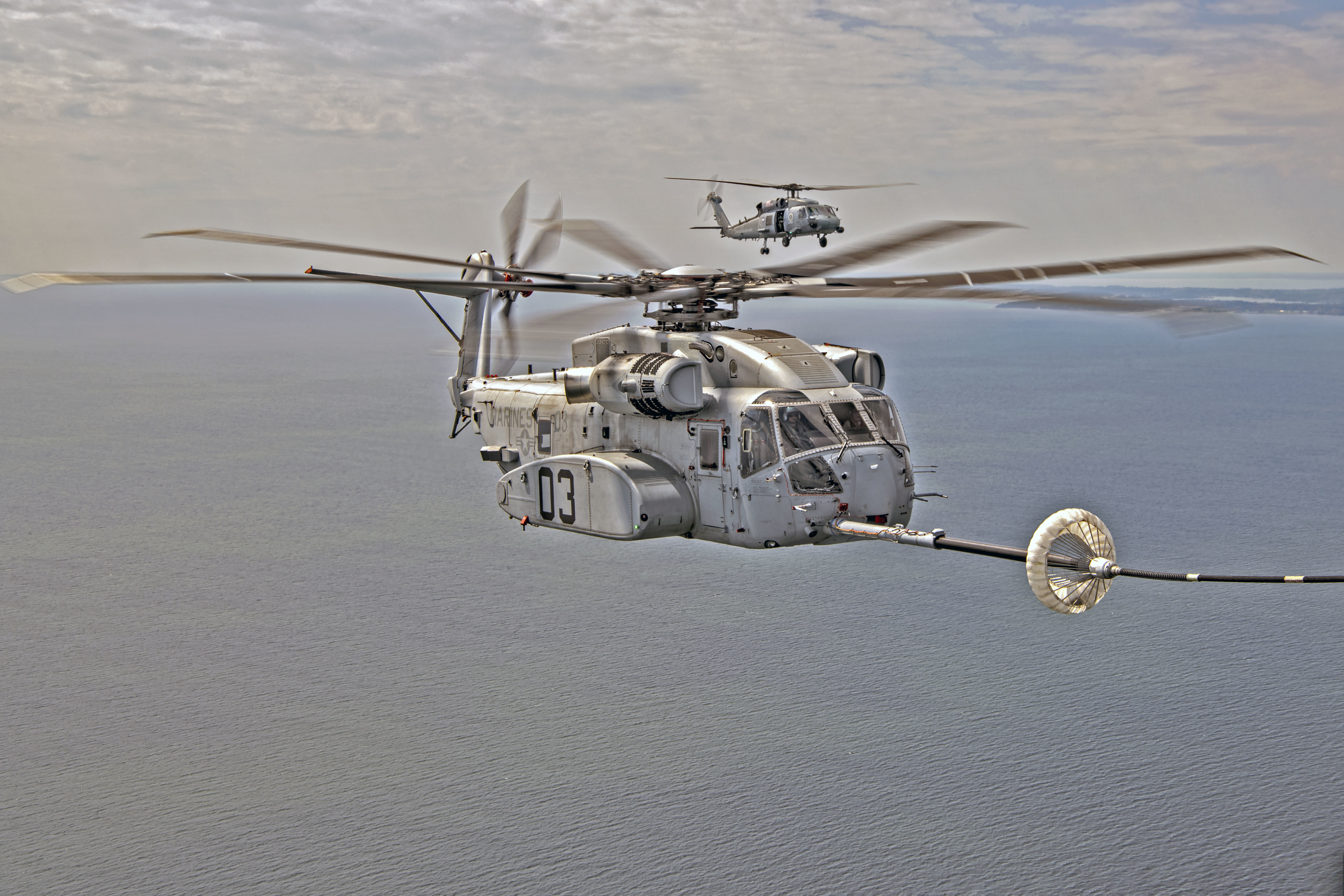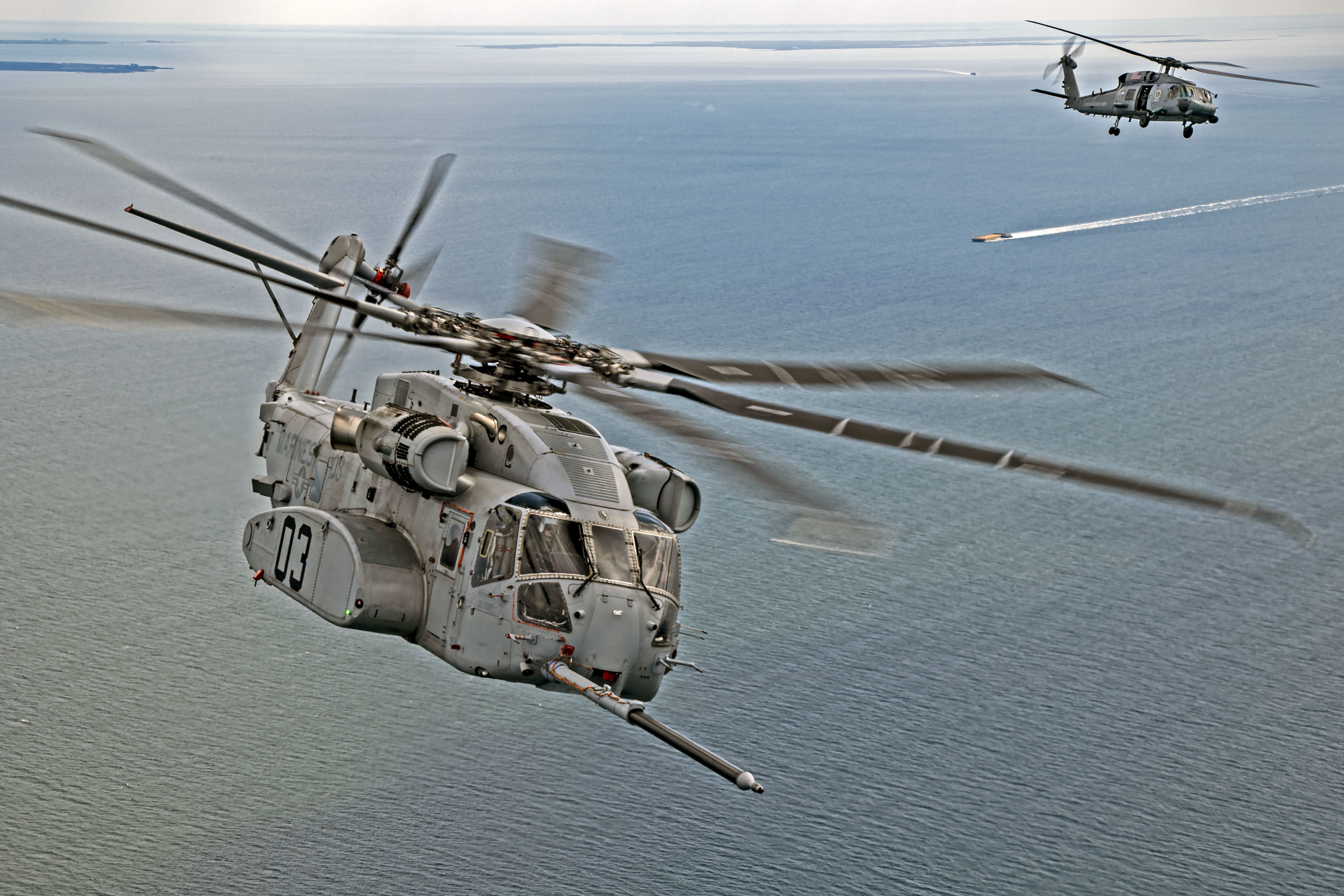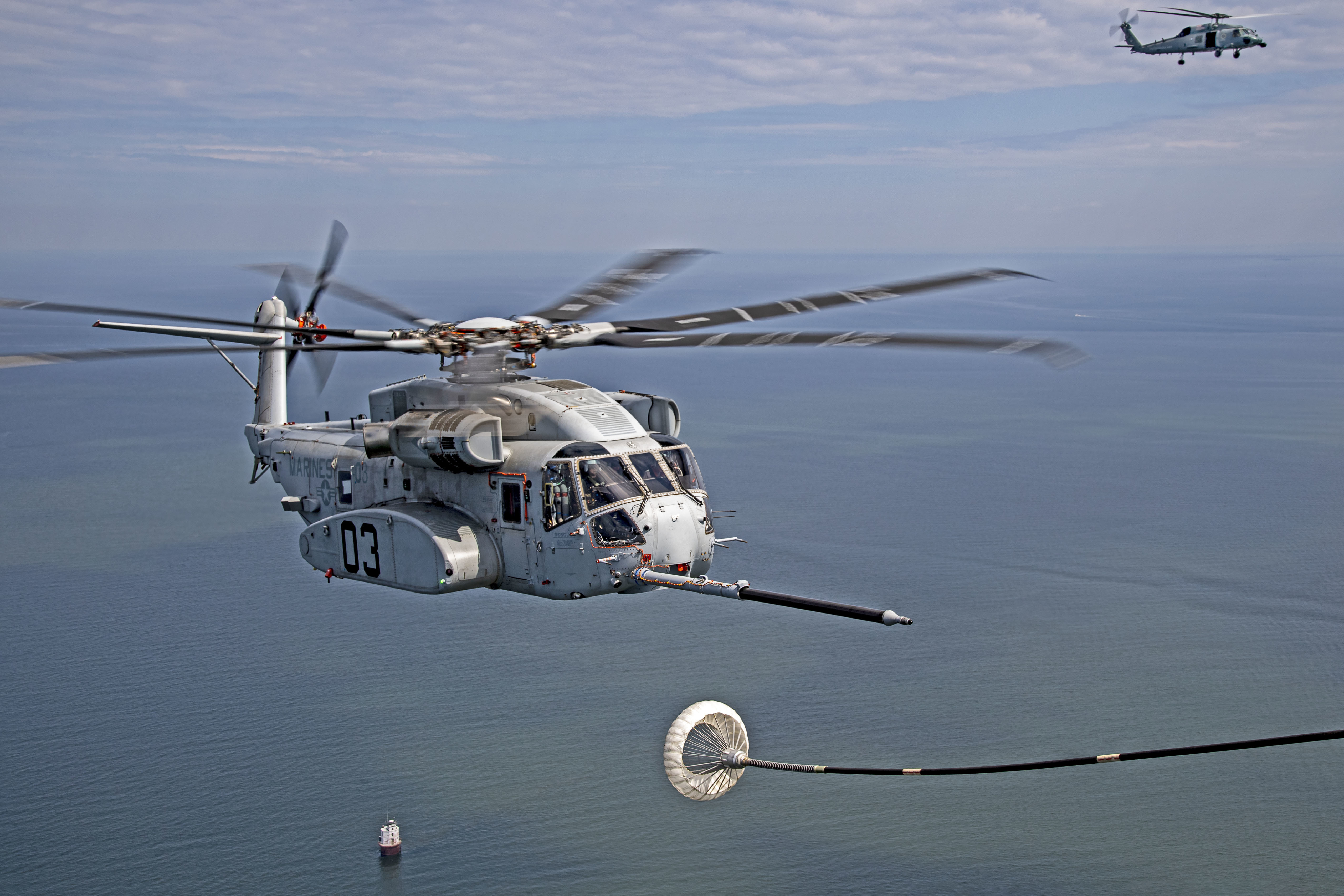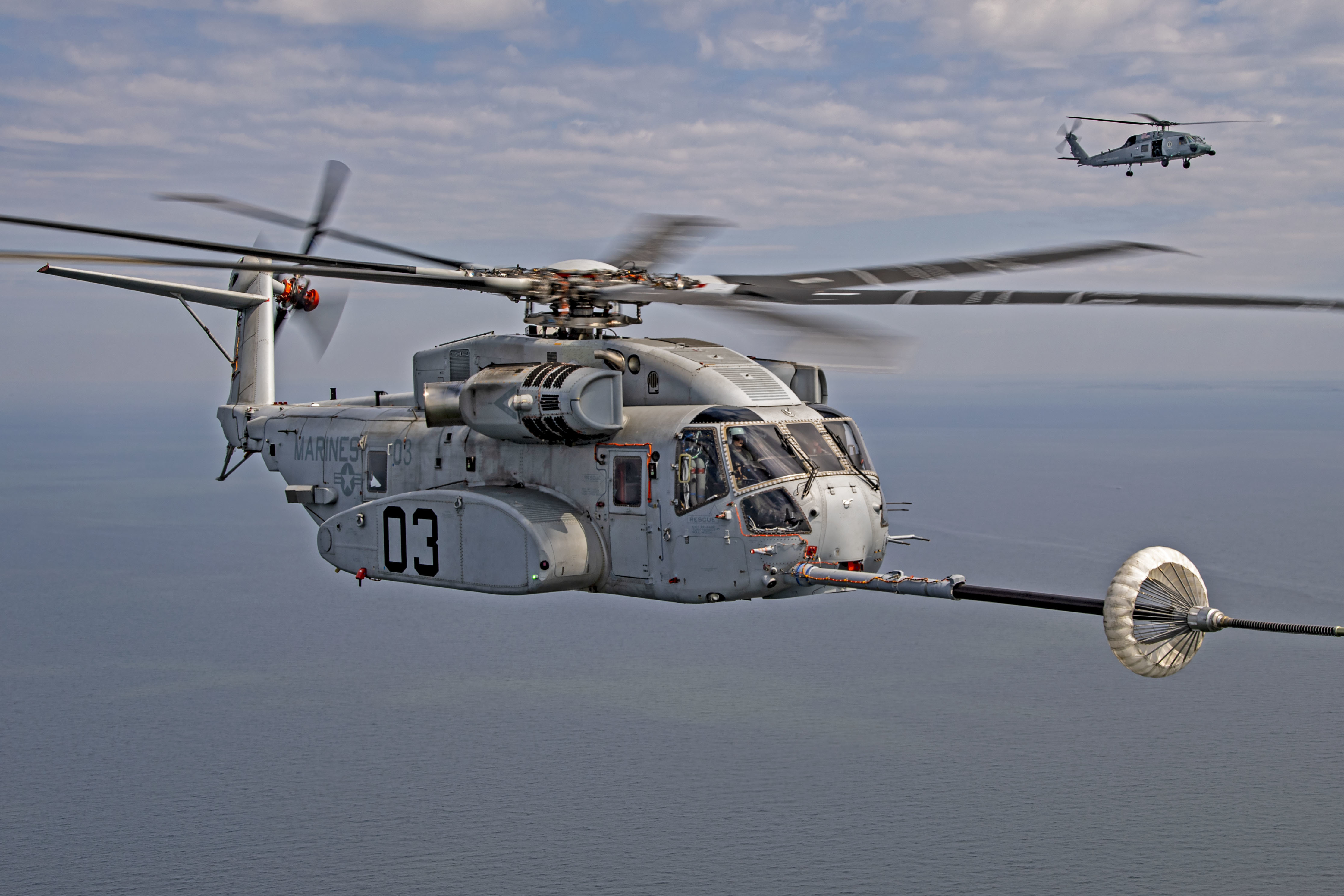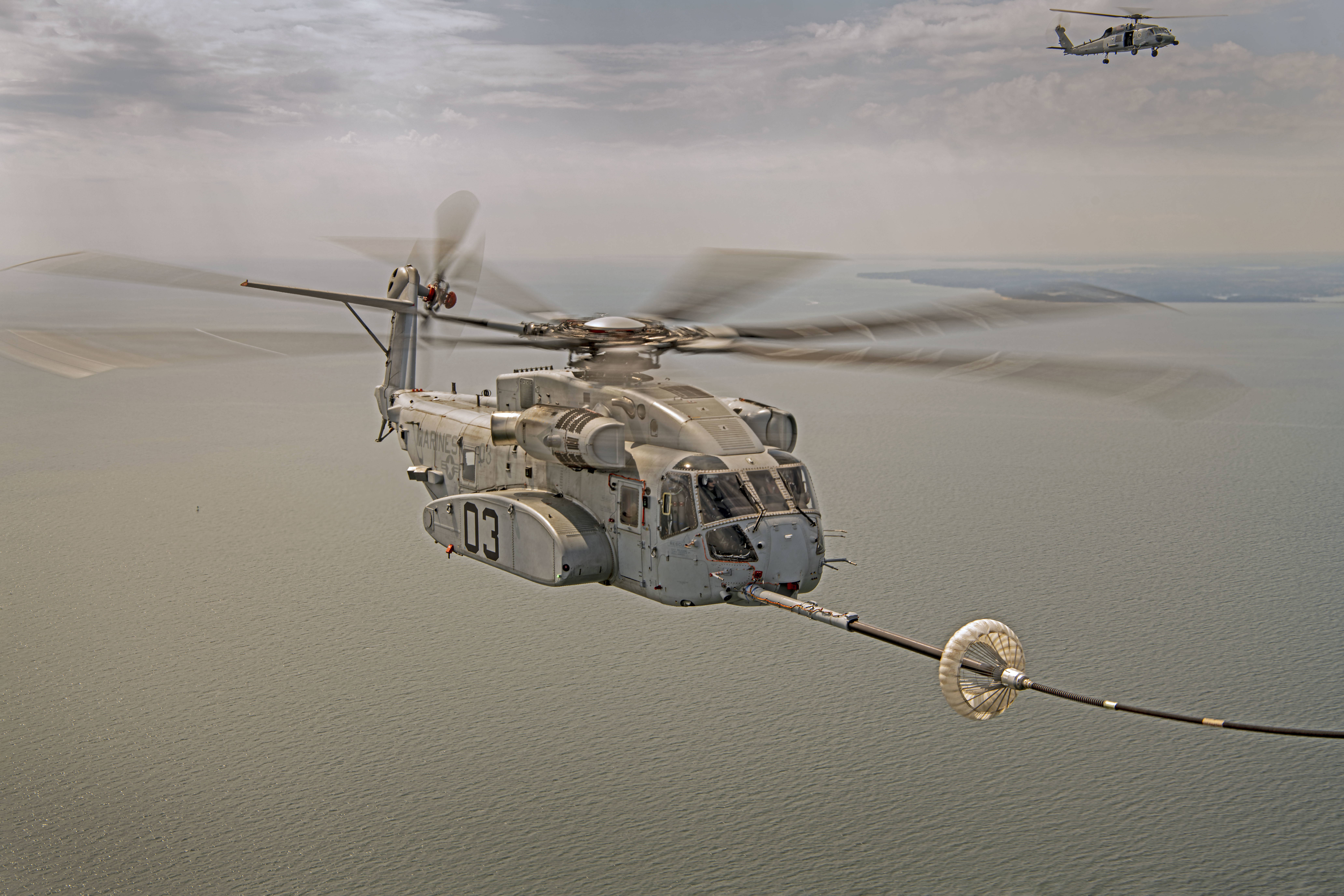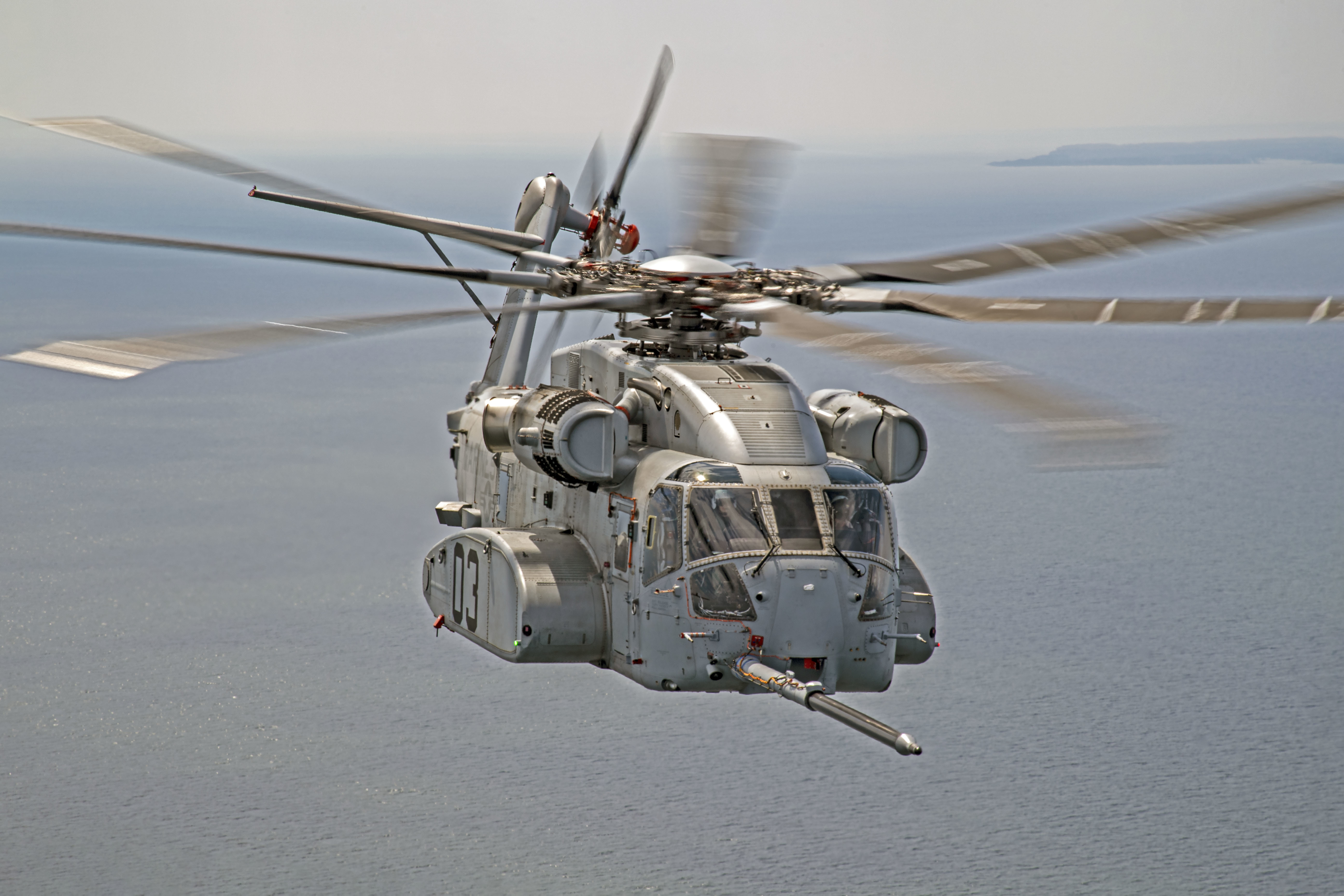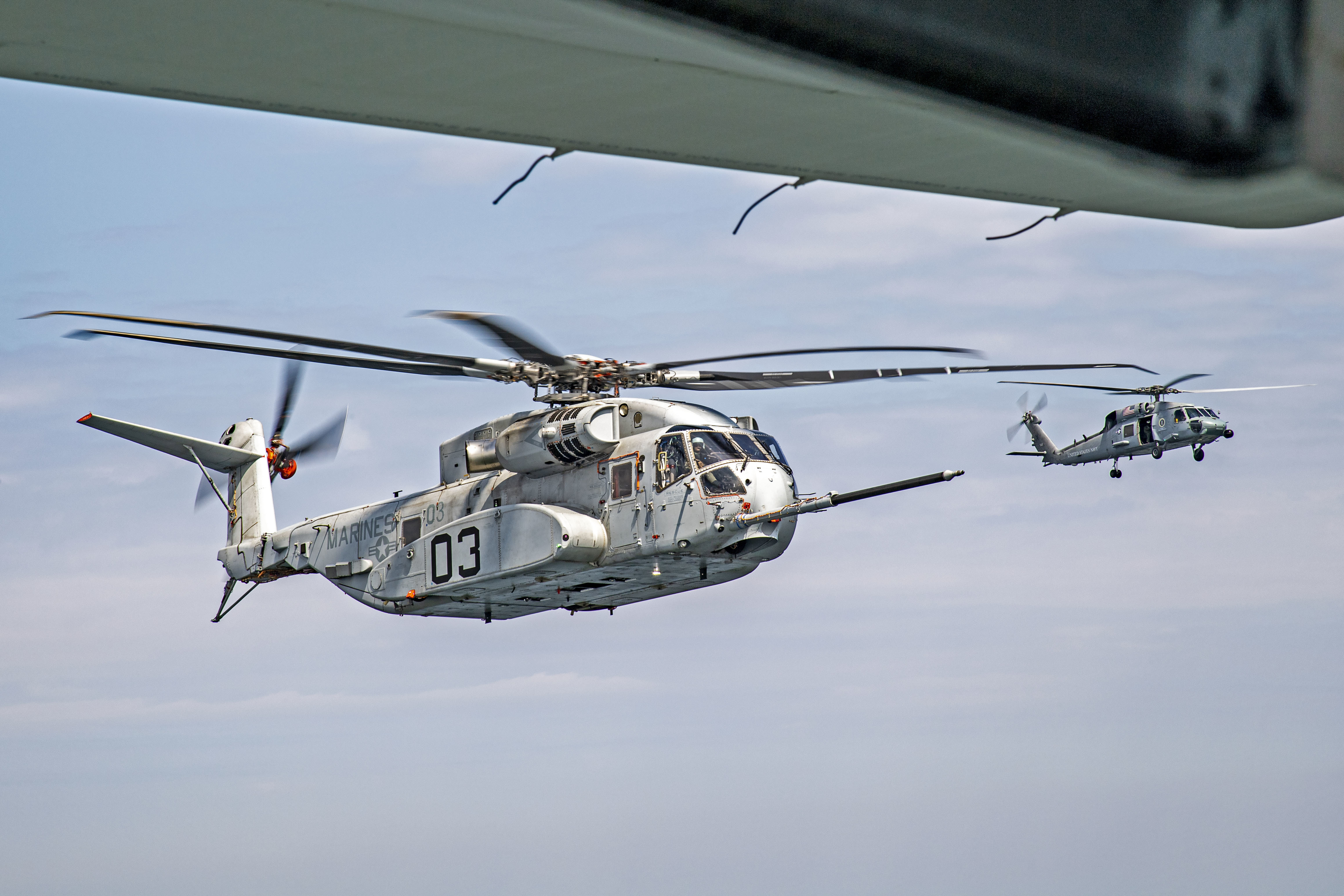Unlike the Chinook, medium lift helicopter, the CH-53K is capable of being refueled while in flight.
If you are looking for speed, range, and heavy lift delivery to an insertion point, the CH-53K is a unique combat asset in the US joint force.
The photos below show the CH-53K King Stallion successfully plugging into a funnel-shaped drogue towed behind a KC-130J during aerial refueling wake testing over the Chesapeake Bay (Pax River, April 6, 2020).
And this refueling capability is part of why the King Stallion is an important capability when considering how to get to the fight with the right kit, at the right time and to make a combat difference.
It is not about building Walmarts any more such as in the Middle East land wars; it is about shaping effectively crisis management events.
In the German case, we looked at how to compare the Chinook and the CH-53K for the German forces, and the two offer very different options and capabilities.
As we pointed out in a comparison of the two platforms as options for the German forces:
If this was the Cold War, where the primary focus was really upon moving support around Germany to reinforce the direct defense of Germany, then there might be a compelling case for the legacy Chinook.
But that is not what Germany is facing in terms of the return of direct defense in Europe.
In our forthcoming book, The Return of Direct Defense in Europe: Meeting the 21st Century Authoritarian Challenge, we focus on the major challenges facing the allies in terms of defense against the Russians in terms of the Poland-to Nordic arc. Within this arc, the challenge is to move force rapidly, to reinforce deterrence and to be able to block Russian movement of force.
Germany faces the challenge of reinforcing their Baltic brigade, moving rapidly to reinforce Poland, and to move force where appropriate to its Southern Flank. In the 2018 Trident Juncture exercise, German forces moved far too slowly to be effective in a real crisis, and it is clear that augmenting rapid insertion of force with lift is a key requirement for Germany to play an effective role.
This is where the CH-53K as a next generation heavy lift helicopter fits very nicely into German defense needs and evolving concepts of operations. The CH-53K operates standard 463L pallets which means it can move quickly equipment and supply pallets from the German A400Ms or C‑130Js to the CH-53K or vice versa.
This is not just a nice to have capability but has a significant impact in terms of time to combat support capability; and it is widely understood that time to the operational area against the kind of threat facing Germany and its allies is a crucial requirement.
With an integrated fleet of C-130Js, A400Ms and CH-53Ks, the task force would have the ability to deploy 100s of miles while aerial refueling the CH-53K from the C-130J.
Upon landing at an austere airfield, cargo on a 463L pallet from a A400M or C-130J can transload directly into a CH-53K on the same pallet providing for a quick turnaround and allowing the CH-53K to deliver the combat resupply, humanitarian assistance supplies or disaster relief material to smaller land zones dispersed across the operating area.
Similarly, after aerial refueling from a C-130J, the CH-53K using its single, dual and triple external cargo hook capability could transfer three independent external loads to three separate supported units in three separate landing zones in one single sortie without having to return to the airfield or logistical hub.
The external system can be rapidly reconfigured between dual point, single point loads, and triple hook configurations, to internal cargo carrying configuration, or troop lift configuration in order to best support the ground scheme of maneuver.
If the German Baltic brigade needs enhanced capability, it is not a time you want to discover that your lift fleet really cannot count on your heavy lift helicopter showing up as part of an integrated combat team, fully capable of range, speed, payload and integration with the digital force being built out by the German military.
It should be noted that the CH-53K is air refuelable; the Chinook is not.
And the CH-53 K’s air refuelable capability is built in for either day or night scenarios.
A 2019 exercise highlighted the challenge if using the Chinooks to move capability into the corridor.
In the Green Dagger exercise held in Germany, the goal was to move a German brigade over a long distance to support an allied engagement. The Dutch Chinooks were used by the German Army to do the job.
But it took them six waves of support to get the job done.
Obviously, this is simply too long to get the job done when dealing with an adversary who intends to use time to his advantage. In contrast, if the CH-53K was operating within the German Army, we are talking one or two insertion waves.
And the distributed approach which is inherent in dealing with peer competitors will require distributed basing and an ability to shape airfields in austere locations to provide for distributed strike and reduce the vulnerabilities of operating from a small number of known airbases.
Here the CH-53K becomes combat air’s best friend. In setting up Forward Operating Bases (FOBs), the CH-53K can distribute fuel and ordnance and forward fueling and rearming points for the fighter aircraft operating from the FOBs.
Being a new generation helicopter it fits into the future, not the past of what the Bundeswehr has done in the Cold War. It is not a legacy Cold War relic, but a down payment on the transformation of the Bundeswehr itself into a more reactive, and rapid deployment force to the areas of interest which Germany needs to be engaged to protect its interests and contribute to the operational needs of their European allies.
For our report on the CH-53K, see the following:


